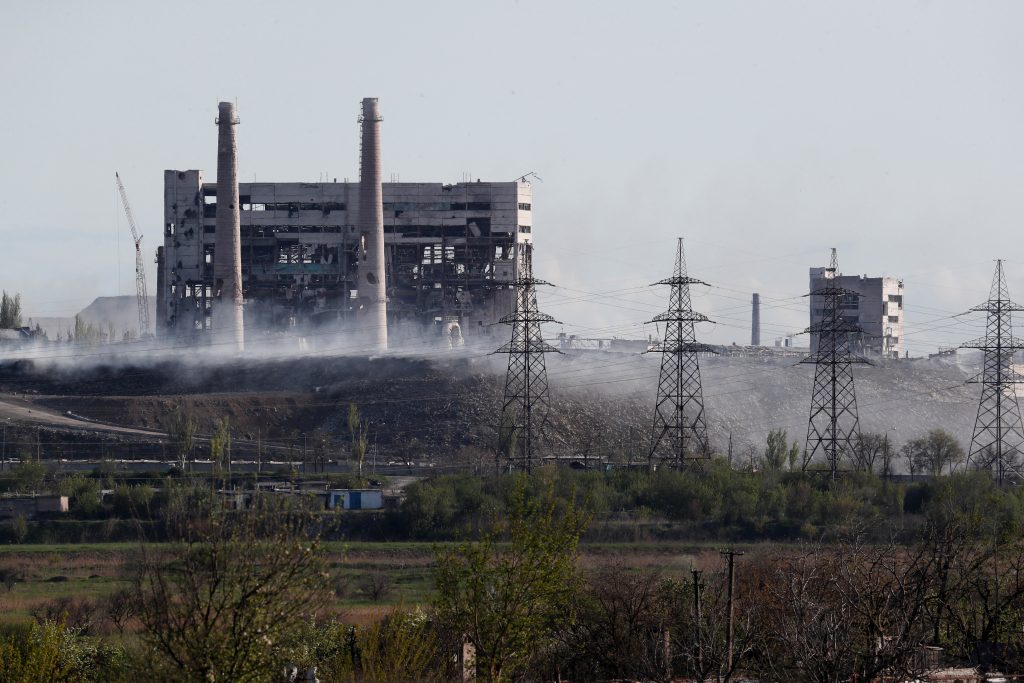After several months of heavy fighting around the besieged Azovstal steel factory area in the south of Mariupol, Ukrainian forces have announced the completion of their “combat mission” in the region, according to the Associated Free Press (AFP).
On 17 May, the General Staff of the Armed Forces of Ukraine ordered besieged commanders to “save the lives of their personnel”, launching the evacuation and surrender of the hundreds of injured soldiers from the ruins and tunnels of the former steel plant.
The Russian Defence Ministry has announced that a total of 959 Ukrainian soldiers have surrendered in the area around the steel plant since Monday. The Ukrainian government claims that 264 of their troops were captured, with 53 seriously injured.
Despite the surrender, Ukraine’s Deputy Defence Minister Hanna Malyar has stated that the last stand tied up around 20,000 Russian forces from moving to other regions in Ukraine. Some Ukrainian forces, she says, still remain at Azovstal.
Footage of the surrender released by the Russian government shows dozens of injured troops boarding buses and ambulances towards territories occupied by the Russian Federation. According to the Russian forces, around 51 troops were transported to hospitals in nearby Novoazovsk.
The brutality of war
Mariupol quickly came under siege by Russian forces during the early stages of the invasion of Ukraine. Since then, Russia has damaged or destroyed more than 95% of the buildings in the city, according to Ukrainian officials.
The city of Mariupol has traditionally been the home and base of the Azov Battalion, a controversial military force which merged into the National Guard of Ukraine in 2014 following Russia’s annexation of the Crimean Peninsula. The battalion is now considered one of the best equipped and experienced units in the Ukrainian army.
During the Siege of Mariupol, Azov forces created defensive positions in the dense industrial Azovstal factory grounds, with many Mariupol locals fleeing with them into the tunnels of the plant to escape relentless shelling by Russian forces.
For months, Azov troops fought with low ammunition and medical supplies. In a desperate plea to the Ukrainian government and Western allies, Azov regiment commander Denys Prokopenko and other officers appealed for evacuations of Azov troops to Ukrainian-held territories.
A joint International Committee of the Red Cross (ICRC) and United Nations (UN) evacuation succeeded in evacuating many of the civilians on 3 May, collecting over 100 civilians from the rubble of the plant. The soldiers, however, were unable to withdraw from the city.
Fighting to the last man
[gallery columns="1" link="file" size="full" ids="225848,225849,225850,225851"]
Photos provided by the Azov battalion showed several soldiers continuing to fight, despite losing limbs, eyes, and suffering other severe wounds.
A week before the surrender, with no evacuations in sight and the humanitarian situation within the grounds of the plant continuing to deteriorate, commanders in the besieged area lashed out at the Kyiv government for having “failed in the defence of Mariupol.”
Related News
- Prolonging the pain: Russia blocks Ukraine gas transit to exacerbate EU energy woes
- How Belgium brought steel to Ukraine’s steppes
- Ukraine: Kyiv appeals to MSF to help evacuate soldiers trapped in Azovstal Steel Complex
During the 2022 Eurovision Song Contest in Turin, Ukrainian folk-rap group Kalush Orchestra shouted an appeal for the evacuation of the defenders of Azovstal.
It is unclear what fate awaits the surrendered Azov troops from the ruins of Azovstal. Russia has assured that it will treat the soldiers in accordance with international law. Previous statements made by the Russian, however, refused to call the troops combatants, but rather just neo-Nazis.
The Ukrainian government is already discussing the possibility of exchanging the Azov soldiers in exchange for Russian prisoners of war.

